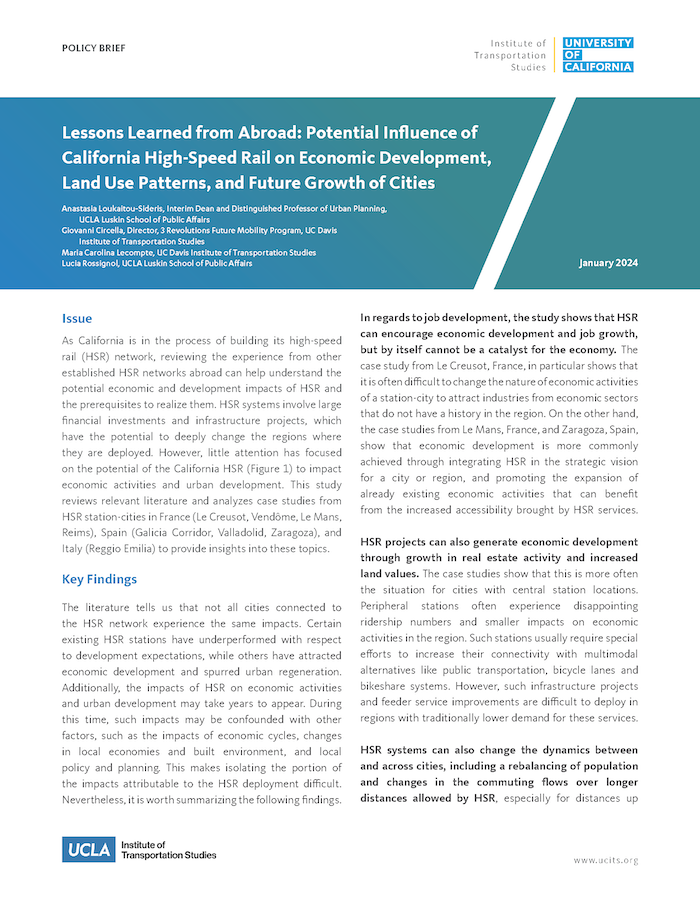Date: April 30, 2024
Author(s): Anastasia Loukaitou-Sideris, Giovanni Circella, Maria Carolina Lecompte, Lucia Rossignol
Abstract
As California is in the process of building its high-speed rail (HSR) network, reviewing the experience from other established HSR networks abroad can help understand the potential economic and development impacts of HSR and the prerequisites to realize them.
About the Project
New transportation networks facilitate mobility and may also spur economic development. Over the past decades, a new transportation technology — high-speed rail (HSR) — has brought a profound impact on urban-regional accessibility and intercity travel across Europe and East and South-East Asia. But the economic and spatial impacts of HSR have been varied and are largely contingent on a variety of factors, as well as local planning and policy. As California is in the process of building its own HSR network, it is important to review the experience of established HSR networks abroad and understand the possible economic effects that HSR can bring to regional and local economies, and their prerequisites. While the impacts of California’s plan on the direct creation of jobs in local markets (e.g., construction sector) and on the travel sector (e.g., forecasts for HSR travel demand) have been investigated, the possible indirect impacts (e.g., on land values, tourism, firm location, and local and regional development) have not gathered enough attention. This research proposal attempts to fill this gap.


